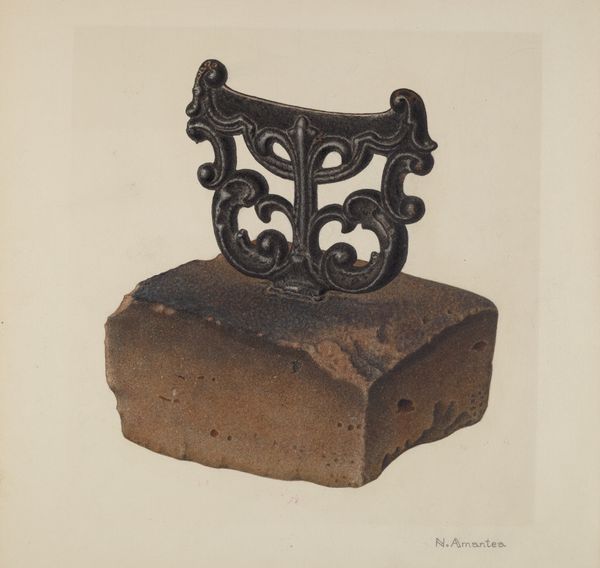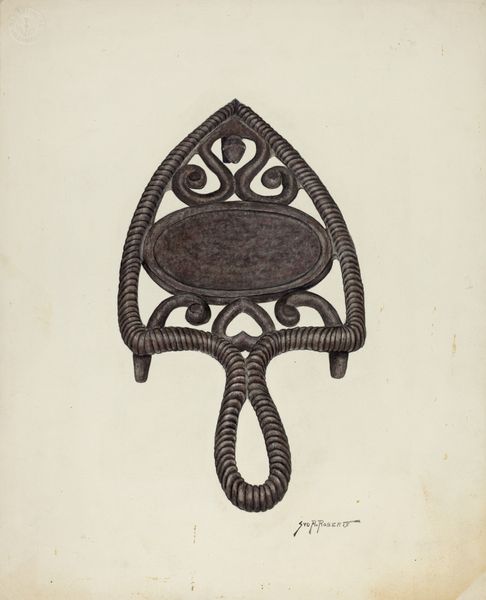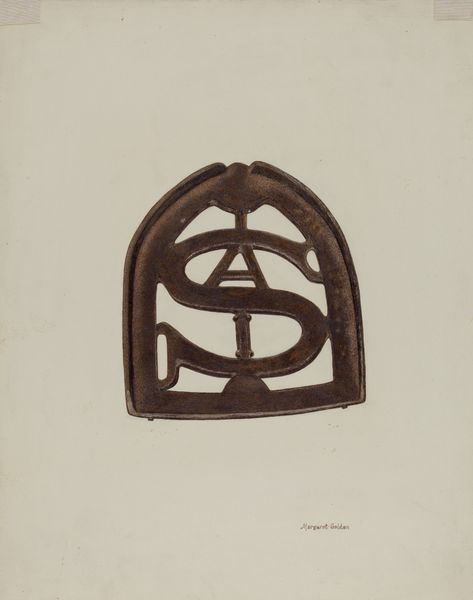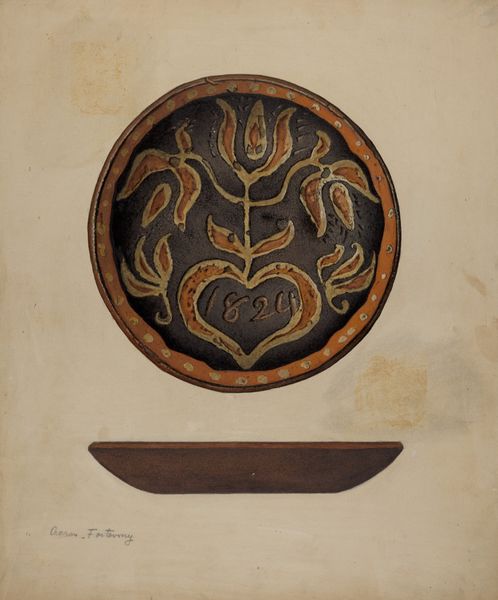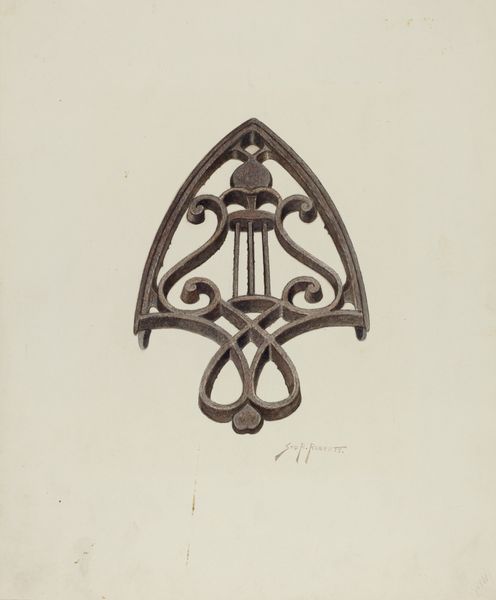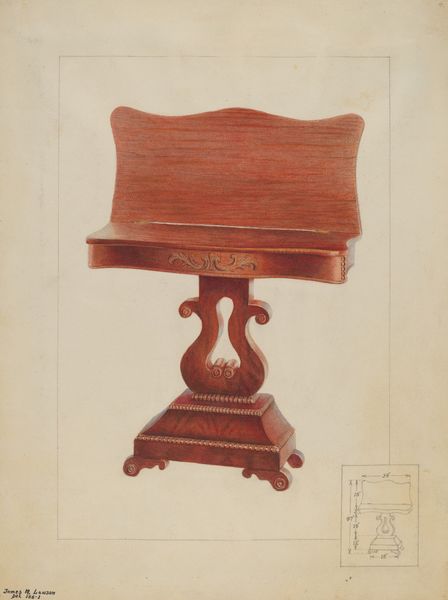
drawing, metal, watercolor
#
drawing
#
metal
#
sculpture
#
watercolor
#
watercolour illustration
#
academic-art
#
realism
Dimensions: overall: 23 x 28.1 cm (9 1/16 x 11 1/16 in.)
Copyright: National Gallery of Art: CC0 1.0
Curator: Here we have John Price's watercolor drawing "Foot Scraper," created around 1942. What are your first thoughts? Editor: Well, there's a striking stillness about it. The object itself is quite humble, yet the ornate design elements introduce a level of sophistication, a delicate curve mirrored by another. The palette reinforces that tension. Curator: Indeed. The artwork itself, made using watercolors, provides a sharp contrast with the very nature of the item depicted: a metal foot scraper. John Price was one of many artists employed through the WPA’s Federal Art Project. Editor: So, a pragmatic object immortalized through the lens of governmental support during a crucial period? The very idea seems to suggest art's democratic function in wartime. Focusing in, there is also much intricacy with how Price rendered this piece. It seems he truly studied the subject. Note the rust on the metal; it’s palpable. Curator: Exactly! These artists often focused on elements of everyday life, imbuing them with a sense of importance and cultural value. There’s an argument to be made that this emphasis aimed to build morale and reinforce a sense of shared American identity during times of hardship. Editor: One has to marvel at the academic realism on display, the play of shadow that gives this seemingly banal item heft and purpose. It could be the centerpiece of a still life by Chardin. The attention to detail invites closer inspection and meditation on the beauty of functionality. It speaks to how everyday objects can inspire profound creative response. Curator: Absolutely. It is also worth considering how its function changed from being outside someone's doorstep into the inside of a gallery as an exhibited piece of art. Editor: It truly asks us to find beauty in unexpected places, and I appreciate the simplicity and elegance, the subdued colors almost forcing the viewer to truly *see* the piece. Curator: And through the artistic process, everyday objects can gain value that surpasses their mere utilitarian function. Editor: A fine lesson in noticing and appreciating, I think, whatever its historical intentions might have been.
Comments
No comments
Be the first to comment and join the conversation on the ultimate creative platform.

